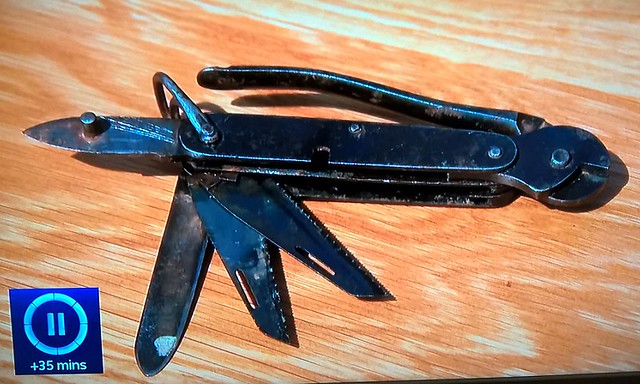- Joined
- Mar 28, 2015
- Messages
- 726
If ever a multi-tool deserved the right to feature on this forum it would be this one. When I first saw this I figured it was probably produced for a particular trade by a particular corporation (I.E. telecommunications or electrical). But noticing it had two hack saw blades I began to think that maybe it had been cobbled together by some ingenious prisoner of war for the purposes of escape, and I wasn't far wrong. It turns out that the pattern, originally designed for military use during the Boer War, was developed for the S.O.E. (Special Operations Executive) during WW2. It was issued to an elite group for the purpose of sabotage and escape within Nazi occupied Europe. The Knife, found in a garden shed, was valued between £500-£1000.
 Untitled by Blake Blade, on Flickr
Untitled by Blake Blade, on Flickr
This knife is obviously of great interest in itself and was designed for a serious purpose during difficult and dangerous times. But I was just wondering what traditional folding knife you would choose for use under similar circumstances. Bear in mind that it would not only be used for everyday chores and survival but also sabotage and possibly, if captured and incarcerated, to effect your means of escape. Thanks.
Thanks.
-Mark
 Untitled by Blake Blade, on Flickr
Untitled by Blake Blade, on FlickrThis knife is obviously of great interest in itself and was designed for a serious purpose during difficult and dangerous times. But I was just wondering what traditional folding knife you would choose for use under similar circumstances. Bear in mind that it would not only be used for everyday chores and survival but also sabotage and possibly, if captured and incarcerated, to effect your means of escape.
-Mark
Last edited:





